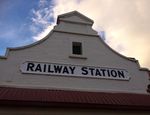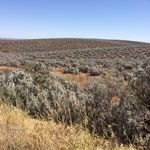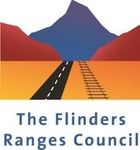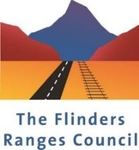Flinders Ranges Economic Growth & Investment Strategy
←
→
Page content transcription
If your browser does not render page correctly, please read the page content below
Flinders Ranges
Economic Growth &
Investment Strategy
Prepared on behalf of Regional Development Australia
Far North and The Flinders Ranges Council
Revised Report, January 2019This report has been prepared on behalf of Regional Development Australia Far North and The Flinders Ranges Council It has been prepared by: SC Lennon & Associates Pty Ltd ACN 109 471 936 PO Box 45 The Gap QLD Australia 4061 p: (07) 3312 2375 m: 0410 550 272 e: sasha@sashalennon.com.au w: www.sashalennon.com.au Offices in Brisbane and Melbourne In association with Whitaker Consulting Pty Ltd And with input provided by REMPLAN 67 Wills Street Bendigo VIC Australia 3550 p: (03) 5444 4788 e: matthew@remplan.com.au w: www.remplan.com.au Offices in Victoria and Queensland Disclaimer This report was prepared by SC Lennon & Associates Pty Ltd on behalf of Regional Development Australia Far North (RDAFN) and The Flinders Ranges Council. It has been prepared on the understanding that users exercise their own skill and care with respect to its use and interpretation. Any representation, statement, opinion or advice expressed or implied in this publication is made in good faith. SC Lennon & Associates Pty Ltd and the individual authors of and contributors to this report are not liable to any person or entity taking or not taking action in respect of any representation, statement, opinion or advice referred to above.
TABLE OF CONTENTS
Executive Summary
1. Introduction 1
1.1 Strategy Background........................................................................................................ 1
1.2 Strategy Purpose ............................................................................................................. 2
1.3 Strategy Outcomes .......................................................................................................... 3
1.4 Strategy Framework ........................................................................................................ 4
Addressing the Determinants and Enablers of Economic Development ...................4
Economic Growth and Investment Strategy Themes .................................................7
2. Economic Stocks and Flows 10
2.1 Overview of The Flinders Ranges Council Region’s Economy ....................................... 10
2.2 The Flinders Ranges Council Region’s Socio-Economic Structure and Dynamics .......... 10
Population ................................................................................................................10
Unemployment Trends.............................................................................................11
2.3 Economic Stocks and Flows ........................................................................................... 12
Employment by Industry ..........................................................................................12
Industry Output and Value-Added ...........................................................................13
Inter-regional Exports ..............................................................................................15
Import Replacement Opportunities .........................................................................16
The Flinders Ranges’ ‘Driver’ Industries ...................................................................17
3. Economic Development Priorities – Support the Flinders Ranges’ Tourism Sector 19
3.1 Overview of Tourism in the Flinders Ranges ................................................................. 19
3.2 Tourism’s Contribution to The Flinders Ranges Council Region’s Economy .................. 20
3.3 Tourism Industry Performance and Outlook ................................................................. 20
3.4 Challenges and Opportunities for Tourism Sector Growth and Development .............. 20
Drive Tourism Access to and Through the Flinders Ranges......................................21
Fly-in Tourism Access to The Flinders Ranges Council Region .................................21
Critical Infrastructure - Communications, Power and Water Supply .......................22
Tourism Signage .......................................................................................................23
Quality of Visitor Accommodation ...........................................................................24
Tourism Sector Business and Workforce Capacity ...................................................24
Product / Experience Development .........................................................................25
Regional Collaboration and Coordination ................................................................26
3.5 Actions ........................................................................................................................... 27
3.6 Performance Measures ................................................................................................. 28
4. Other Economic Development Priorities for The Flinders Ranges Council Region 30
4.1 Support Sustainable Agriculture in The Flinders Ranges Council Region ...................... 30
Challenges and Opportunities for Growth ...............................................................30
Actions .....................................................................................................................31
Performance Measures ............................................................................................31
4.2 Monitor Investigations into the National Radioactive Waste Management Facility ..... 32
Challenges and Opportunities for Growth ...............................................................32
Actions .....................................................................................................................33
Performance Measures ............................................................................................334.3 Promote The Flinders Ranges Council Region as a Location of Choice for Investment, Working,
Learning and Outback Living ......................................................................................... 34
Challenges and Opportunities for Growth ...............................................................34
Actions .....................................................................................................................35
Performance Measures ............................................................................................35
5. Economic Growth and Investment Strategy Work Plan 37
5.1 Assessing and Prioritising Actions ................................................................................. 37
5.2 Priorities for Action – Informing a Year 1 Work Plan ..................................................... 41
5.3 Continuing Collaborative Partnerships for Effective Implementation ........................... 42
ReferencesLIST OF FIGURES
Figure 1. Determinants and Enablers of Economic Development ....................................................6
Figure 2. Economic Growth and Investment Strategy Themes .........................................................8
Figure 3. Population Trend, Flinders Ranges, 2007 to 2017 ............................................................11
Figure 4. Unemployment Rates, Flinders Ranges, South Australia and Australia, June 2016 to June
2018 .................................................................................................................................11
Figure 5. Employment by Industry, Flinders Ranges and Far North Region, 2017 ..........................12
Figure 6. Flinders Ranges Tourism Industry Output as a Proportion of Total, 2017........................14
Figure 7. Value-Added by Industry, Flinders Ranges and Far North Region, 2017 ..........................14
Figure 8. Inter-regional Exports by Industry, Flinders Ranges and Far North Region, 2017 ............15
Figure 9. Selected Industry Expenditure Breakdown by Location, Flinders Ranges, 2017..............16
Figure 10. Flinders Ranges’ ‘Driver’ Industries ..................................................................................17
Figure 11. Opportunity Assessment Matrix ......................................................................................37
Figure 12. Summary of Action Assessment Outcomes .....................................................................39Flinders Ranges Economic Growth and Investment Strategy
Executive Summary
Executive Summary
Informed and Strategic Planning for Economic Development
Regional Development Australia Far North (RDAFN) and The Flinders Ranges Council commissioned
the preparation of this Economic Growth and Investment Strategy to help address the Flinders Ranges
Council Region’s challenges and to capitalise on new opportunities for investment to support long-
term growth.
The Flinders Ranges Council Region extends from the central townships of Quorn, Craddock and
Hawker. The Flinders Ranges Economic Growth and Investment Strategy provides a comprehensive
and up-to-date analysis of the region’s economic stocks and flows - both in and out of the Flinders
Ranges - identifying the local area’s connections and interrelationships with the broader South
Australian, national and global economies.
Specifically, the Economic Growth and Investment Strategy provides the evidence base to support
the region’s engagement with both State and Federal Governments on matters of regional
significance that require further attention. It informs the short-term work planning of RDA Far North
and The Flinders Ranges Council, as well as longer-term opportunities for economic development
which need to be planned for now.
The Economic Growth and Investment Strategy promotes the notion that economic development is
about the mutually-reinforcing and complementary relationship between improvements in economic
activity, community wellbeing, cultural diversity, a sense of ‘place’ and the environment. Articulating
how this holistic approach to economic development can directly translate into the organisational
priorities of RDAFN and The Flinders Ranges Council, the Economic Growth and Investment Strategy
informs a strategic and targeted approach to facilitate change towards a prosperous future.
Meeting the Challenges and Building Opportunities for Economic Growth
The Far North Region of South Australia is undergoing a period of unprecedented change and
adjustment following the resources sector slowdown and the resulting reduction and cessation of
mining in the Far North, where the bulk of South Australia’s resources sector activity is located. In
the wake of the mining industry slowdown, the Far North Region’s reliance on mining has posed
challenges for many parts of the region where resources sector activity is the backbone of the
economy.
The Flinders Ranges however, with its relatively diverse economic base, has not been subject to the
same extremes of resources sector peaks and troughs as other parts of the Far North Region have.
Nevertheless, with mining the principal driver of wealth creation in the Far North, the Flinders Ranges
is not immune to either its positive or adverse impacts. For this reason, the Flinders Ranges Council
needs to plan a course of action to address challenges posed by economic dislocation and disturbance
while also identifying and capitalising upon opportunities to build on comparative and competitive
advantage.
The Flinders Ranges Council region is presented with a number of good prospects for economic
growth and development based on existing attributes and opportunities to further diversify the
Page | iFlinders Ranges Economic Growth and Investment Strategy
Executive Summary
region’s economic activity. The foundation of the region’s natural comparative advantage is the
scenic appeal of the Flinders Ranges itself, which is the largest mountain range in South Australia and
includes a number of protected areas including the Ikara-Flinders Ranges National Park, the Mount
Remarkable National Park in the southern part of the region, the Arkaroola Protection Area at the
northern end of the ranges, The Dutchmans Stern Conservation Park, west of Quorn and the Mount
Brown Conservation Park, south of Quorn.
Tourism is the region’s principal economic driver, accounting for the largest share of the region’s
industry output, jobs and exports. The Flinders Ranges’ tourism industry has a solid base and
potential for growth, as national and international market trends support opportunities to capitalise
on demand for outback experiences and historical attractions. Tourism employs local residents across
a diversity of sectors including accommodation and food services, arts and recreation services, retail
and transport. Importantly, the tourism industry has strong linkages to other industries in the local
economy.
A traditional mainstay of The Flinders Ranges Council region’s economy, agriculture, which is based
on sheep, grains and beef cattle production, remains an important contributor to economic activity
in the region. The sector’s historical significance is also a feature of the Flinders Ranges’ tourism offer,
with a number of old pastoral homesteads dotted around the region’s arid landscape providing points
of interest for the many visitors who either pass through or stay in the region to explore.
The importance of sheep and wheat farming in particular, along with copper mining (copper was
mined in the Hawker-Flinders Ranges area in the late 1850s), induced the government of the day to
build a narrow gauge railway line north of Port Augusta through Pichi Richi Pass, Quorn, Hawker and
along the west of the ranges, eventually to Marree. Today, the Pichi Richi Railway is a prominent
feature of the Flinders Ranges visitor experience.
The aesthetic appeal of The Flinders Ranges Council area and the region’s heritage towns and
settlements such as Hawker and Quorn also serve to attract residents looking for a quality outback
lifestyle within commuting distance of Port Augusta.
The relative economic diversity of The Flinders Ranges Council region (compared to other parts of
the Far North) is reflected in the strength of its services industries, with the health care and education
sectors both accounting for a large share of the region’s industry output and employment.
The Flinders Ranges Council region also offers potential for new industries to grow on the back of a
long tradition of creative industries activity in the area. The rugged beauty of the region’s natural
landscape also serves as the basis for the Flinders Ranges’ heritage in television and feature film
making with many notable productions having been shot in the region over the years, providing a
welcome boost to local economic activity.
In order to capitalise on new opportunities for growth, the Flinders Ranges Economic Growth and
Investment Strategy puts in place an informed and strategic plan of action. It identifies activities and
projects which will have immediate, medium and long-term economic benefits for the communities
of the region. It highlights planning and project priorities to facilitate change towards a robust and
sustainable economic future for The Flinders Ranges Council region.
Page | iiFlinders Ranges Economic Growth and Investment Strategy
Executive Summary
Strategy Themes and Actions
The Flinders Ranges Economic Growth and Investment Strategy is defined by five principles which
guide the preparation and implementation of the strategy actions. In essence, it:
1. Prioritises initiatives and activities that support the development of tourism in the Flinders Ranges,
promoting collaboration amongst government agencies and industry stakeholders to enhance
regional branding, marketing, product development, visitor servicing and support infrastructure.
2. Encourages initiatives and activities that support the growth and sustainable development of the
Flinders Ranges Council Region’s traditional agricultural industries.
3. Pro-actively promotes The Flinders Ranges Council region to prospective investors, using a
strategic, informed and targeted approach.
4. Focuses on activities where there are likely to be positive and measurable outcomes for the
community and long-term strategic economic benefits.
The Economic Growth and Investment Strategy provides the framework and directions for economic
development, with the focus being on 31 individual actions across four strategic activity areas that
can be achieved over the next three years. The Action Areas, which have been informed by the
research, consultation and analysis undertaken to prepare this Strategy, are illustrated below.
Flinders Ranges Economic Growth and Invest ment Strategy Themes
Action Area 1:
Support The Flinders Ranges
Council Region's Tourism Sector
Action Area 3:
Action Area 2: Monitor
Support Investigations
Sustainable into the
Agriculture in National
The Flinders Radioactive
Ranges Council Waste
Region Management
Facility
Action Area 4:
Promote The Flinders Ranges
Council Region as a Location of
Choice for Investment, Working,
Learning and Outback Living
Page | iiiFlinders Ranges Economic Growth and Investment Strategy
Executive Summary
In summary, the actions are:
Support the Flinders Ranges’ Tourism Sector
Tourism Support Infrastructure
1.1 Continue to review, assess and prioritise The Flinders Ranges Council region’s strategic regional
road upgrade needs using standard assessment criteria; agree on priorities and advocate
needs to State and Federal Governments.
1.2 Continue to collaborate with relevant State and Federal Government departments and
agencies to progress the Strzelecki Track upgrade and sealing project proposal.
1.3 Prepare a regional wayfinding signage strategy for the Flinders Ranges and Outback with an
emphasis on consistent, branded signage throughout the region and the wider Far North
Region.
1.4 Continue to work together to provide a positive climate for private sector investment in new
and upgraded accommodation as per the 2020 regional target: upgrade 90 rooms from 3-star
to 4-star standard and build 230 new rooms with 25% of 4-star and higher.
1.5 Advocate relevant government agencies to build the infrastructure required, such as
aerodrome upgrades, to support the potential for regional South Australia as an aviation
destination.
1.6 Investigate opportunities to reduce operating costs for public and private aerodromes and
airstrips in the Flinders Ranges and Outback through a group insurance scheme and / or
through Government underwriting.
1.7 Continue to support the rollout of the National Broadband Network (NBN) in The Flinders
Ranges Council region; promote the rollout to the region’s residents and businesses and
include in the region’s investment prospectus material as a key competitive advantage.
1.8 Continue to actively pursue the extension of mobile and satellite phone coverage throughout
the Flinders Ranges and the Outback through support for the Blackspots Program and other
programs as they become available.
1.9 Support The Flinders Ranges Council in its efforts to work with SA Power Networks on a
solution to stabilise power supply in the Flinders Ranges.
1.10 Support The Flinders Ranges Council in its efforts to work with SA Water to construct a
desalination plant to service the town of Quorn.
Tourism Sector Business Support
1.11 Continue to provide business development support to traditional and non-traditional tourism
businesses in The Flinders Ranges Council region.
1.12 Develop and promote a customer service strategy / campaign for the Flinders Ranges and
Outback, targeting both traditional and non-traditional tourism businesses.
Page | ivFlinders Ranges Economic Growth and Investment Strategy
Executive Summary
Tourism Product and Experience Development
1.13 Continue to support FRTOA in its efforts to fund and conduct a feasibility study into the
development of a geological interpretative centre in Hawker.
1.14 Work with tourism agencies and operators to explore opportunities to develop and promote
geo-tourism linkages between the Flinders Ranges and the Outback. Hold discussions with
SATC regarding the potential to develop further linkages with the ‘Dinosaur Trail’ in the
Queensland Outback.
1.15 Work with the Pichi Richi Railway Preservation Society on progressing a concept and feasibility
study into the development of a Pichi Richi Railway interpretative centre.
1.16 Explore opportunities to promote the Flinders Ranges’ history of film on location as a tourism
drawcard.
Tourism Sector Collaboration and Co-ordination
1.17 Continue to encourage an integrated approach between tourism stakeholders to leading and
managing the sector and develop ways to build the self-sustainability of the region’s tourism
management structure.
1.18 Work with FRTOA, FROSAT, the SATIC, the SATC and other key agencies to resource and
implement a regional coordinated marketing approach to tourism.
1.19 Conduct regional tourism expos / tourism exchanges to showcase what is available in the
broader region to operators in the Flinders Ranges and the Outback. Consider the feasibility
of holding these in the low season to maximise opportunities for participation by operators
and involve non-traditional tourism businesses where possible.
1.20 Work with staff and volunteers from VICs and other visitor information points to build their
understanding and capacity to cross-promote towns and regional visitor products to facilitate
a ‘One Outback’ visitor experience.
Support Sustainable Agriculture in The Flinders Ranges Council Region
2.1 Ensure that relevant land use planning policies for The Flinders Ranges Council region reflect
and support a key principle of the South Australian Government’s Far North Region Plan (2010)
to “retain and strengthen the economic potential of pastoral lands”.
2.2 Continue to provide business advisory services to pastoralists looking to diversify into tourism
and other businesses.
2.3 Continue to support the rollout of the National Broadband Network (NBN) in The Flinders
Ranges Council region; promote the rollout to the region’s residents and businesses and
include in The Flinders Ranges Councils’ investment prospectus material as a key competitive
advantage.
2.4 Continue to actively pursue the extension of mobile and satellite phone coverage throughout
the Outback through support for the Blackspots Program and other programs as they become
available.
Page | vFlinders Ranges Economic Growth and Investment Strategy
Executive Summary
Monitor Investigations into the National Radioactive Waste Management
Facility
3.1 Continue to work with relevant government agencies and other stakeholders in progressing
current and subsequent phases of the National Radioactive Waste Management Facility
project investigations.
Promote The Flinders Ranges Council Region as a Location of Choice for
Investment, Working, Learning and Outback Living
4.1 Continue to work with relevant government agencies and other stakeholders in progressing
current and subsequent phases of the National Radioactive Waste Management Facility
project investigations.
4.2 Continue to support the rollout of the National Broadband Network (NBN) in The Flinders
Ranges Council region; promote the rollout to the region’s residents and businesses and
include in the region’s investment prospectus material as a key competitive advantage.
4.2 Continue to actively pursue the extension of mobile and satellite phone coverage throughout
The Flinders Ranges Council region through support for the Blackspots Program and other
programs as they become available.
4.3 Support The Flinders Ranges Council in its efforts to work with SA Power Networks on a
solution to stabilise power supply in the Flinders Ranges.
4.4 Support The Flinders Ranges Council in its efforts to work with SA Water to construct a
desalination plant to service the town of Quorn or alternative solutions for treated water.
4.5 Facilitate discussions between area schools in The Flinders Ranges Council region and local
business operators on opportunities to strengthen the alignment between vocational
education and training and the region’s economic growth and investment opportunities,
particularly tourism.
4.6 Continue to support the capacity development of regional business operators through access
to business advisory services. Explore opportunities to resource a regular program of business
development workshops throughout the Flinders Ranges and Far North Region.
Priorities for Action – Informing a Year 1 Work Plan
Priority projects and activities for implementation as part of a Year 1 work plan are identified based
on the application of two broad set of assessment criteria – benefit assessment and capacity to
implement. They represent activities that RDAFN and The Flinders Ranges Council should advance (in
association with identified partners where relevant) as short-term priorities.
The Year 1 priorities are:
1. Continue to review, assess and prioritise The Flinders Ranges Councils’ strategic regional road
upgrade needs using standard assessment criteria; agree on priorities and advocate needs to
State and Federal Governments.
2. Continue to collaborate with relevant State and Federal Government departments and agencies
to progress the Strzelecki Track upgrade and sealing project proposal.
Page | viFlinders Ranges Economic Growth and Investment Strategy
Executive Summary
3. Prepare a regional wayfinding signage strategy for the Flinders Ranges and Outback with an
emphasis on consistent, branded signage throughout the region and the wider Far North Region.
4. Continue to support the rollout of the National Broadband Network (NBN) in The Flinders
Ranges Council region; promote the rollout to the region’s residents and businesses and include
in the region’s investment prospectus material as a key competitive advantage.
5. Continue to actively pursue the extension of mobile and satellite phone coverage throughout
the Flinders Ranges and the Outback through support for the Blackspots Program and other
programs as they become available.
6. Continue to provide business development support to traditional and non-traditional tourism
businesses in The Flinders Ranges Council region.
7. Continue to provide business advisory services to pastoralists looking to diversify into tourism
and other businesses.
In progressing these actions, cultivating collaborative partnerships will be key.
Continuing Collaborative Partnerships for Effective Implementation
Promoting economic growth and investment in The Flinders Ranges Council region requires both
leadership and the formation of partnerships.
Using the Economic Growth and Investment Strategy as a plan of action, RDA Far North and The
Flinders Ranges Council will take the lead, working together with other stakeholders to address
opportunities for improved integrated planning and management concerning matters arising from
the interface of natural resources management, economic development and community wellbeing.
To this end, the Economic Growth and Investment Strategy guides the efforts of RDA Far North and
The Flinders Ranges Council to facilitate opportunities for investment to support long-term growth.
Using the evidence presented in this report (the economic stocks and flows analysis), it also supports
the region’s engagement with both State and Federal Governments on matters of significance.
Page | viiFlinders Ranges Economic Growth and Investment Strategy
Executive Summary
1. Introduction
Page | viiiFlinders Ranges Economic Growth and Investment Strategy 1. Introduction 1.1 Strategy Background Regional Development Australia Far North (RDAFN) and The Flinders Ranges Council commissioned the preparation of this Economic Growth and Investment Strategy to help address the Flinders Ranges Council Region’s challenges and to capitalise on new opportunities for investment to support long- term growth. The Flinders Ranges Council region extends from the central townships of Quorn, Craddock and Hawker. The Flinders Ranges Economic Growth and Investment Strategy provides a comprehensive and up-to-date analysis of the region’s economic stocks and flows - both in and out of the Flinders Ranges - identifying the local area’s connections and interrelationships with the broader South Australian, national and global economies. Informed by a comprehensive analysis of the local and regional economies, a review of the economic development policy and strategy environment and targeted consultation with selected stakeholders, the Economic Growth and Investment Strategy identifies future activities and ‘focal’ areas in support of the economic growth and development in The Flinders Ranges Council Region. The Flinders Ranges and the wider Outback Region of South Australia (the Outback) is undergoing a period of unprecedented change and adjustment following the resources sector slowdown and the resulting reduction and cessation of mining in the Far North Region, where the bulk of South Australia’s mining activity is located. The scale of subsequent job losses highlights the vulnerability of the region to a downturn in mining, with the majority of local industry activity directly or indirectly dependent on the prosperity of the resources sector. In the wake of the mining industry slowdown, the Far North’s reliance on mining has posed challenges for many parts of the region where mining activity is the backbone of the economy. The Flinders Ranges Council region however, with its relatively diverse economic base, has not been subject to the same extremes of resources sector peaks and troughs as other parts of the Far North Region have. Nevertheless, with mining the principal driver of wealth creation in the Far North, the Flinders Ranges Council region is not immune to either its positive or adverse impacts. For this reason, The Flinders Ranges Council needs to plan a course of action to address challenges posed by economic dislocation and disturbance while also identifying and capitalising upon opportunities to build on comparative and competitive advantage. The Flinders Ranges Council is presented with a number of good prospects for economic growth and development based on existing attributes and opportunities to further diversify the region’s economic activity. The foundation of the region’s natural comparative advantage is the scenic appeal of the Flinders Ranges itself, which is the largest mountain range in South Australia and includes a number of protected areas including the Ikara-Flinders Ranges National Park, the Mount Remarkable National Park in the southern part of the region, the Arkaroola Protection Area at the northern end of the ranges, The Dutchmans Stern Conservation Park, west of Quorn and the Mount Brown Conservation Park, south of Quorn. Page | 1
Flinders Ranges Economic Growth and Investment Strategy Tourism is The Flinders Ranges Council region’s principal economic driver, accounting for the largest share of the region’s industry output, jobs and exports. The Flinders Ranges’ tourism industry has a solid base and potential for growth as national and international market trends support opportunities to capitalise on demand for outback experiences and historical attractions. Tourism employs local residents across a diversity of sectors including accommodation and food services, arts and recreation services, retail and transport. Importantly, the tourism industry displays strong linkages to other industries in the local economy. A traditional mainstay of The Flinders Ranges Council region’s economy, agriculture, which is based on sheep, grains and beef cattle production, remains an important contributor to economic activity in the region. The sector’s historical significance is also a feature of the Flinders Ranges’ tourism offer, with a number of old pastoral homesteads dotted around the region’s arid landscape providing points of interest for the many visitors who either pass through or stay in the region to explore. The importance of sheep and wheat farming in particular, along with copper mining (copper was mined in the Hawker-Flinders Ranges area in the late 1850s), induced the government of the day to build a narrow gauge railway line north of Port Augusta through Pichi Richi Pass, Quorn, Hawker and along the west of the ranges, eventually to Marree. Today, the Pichi Richi Railway is a prominent feature of the Flinders Ranges visitor experience. The aesthetic appeal of The Flinders Ranges Council region and its heritage towns and settlements such as Hawker and Quorn also serve to attract residents looking for a quality outback lifestyle within commuting distance to work and education in nearby Port Augusta. The relative economic diversity of The Flinders Ranges Council region (compared to other parts of the Far North) is reflected in the strength of its services industries, with the health care and education sectors both accounting for a large share of the region’s industry output and employment. The Flinders Ranges Council region also offers potential for new industries to grow on the back of a long tradition of creative industries activity in the area. The rugged beauty of the region’s natural landscape also serves as the basis for the Flinders Ranges’ heritage in television and feature film making, with many notable productions having been shot in the region over the years, providing a welcome boost to local economic activity. In order to address the challenges and to capitalise on new opportunities for growth, the Flinders Ranges Economic Growth and Investment Strategy puts in place an informed and strategic plan of action. 1.2 Strategy Purpose The Flinders Ranges Economic Growth and Investment Strategy addresses the region’s economic development challenges and prospects with a focus on providing opportunities for investment to support long-term economic development. It includes a comprehensive and up-to-date analysis of the region’s economic stocks and flows - both in and out of the region - identifying The Flinders Ranges Council region’s connections and interrelationships with the broader South Australian, national and global economies. The Economic Growth and Investment Strategy provides the evidence base to support the region’s engagement with both State and Federal Governments on matters of regional significance that require further attention. As well as identifying priorities for the future, the Strategy articulates the role of RDA Far North and The Flinders Ranges Council in facilitating economic development and Page | 2
Flinders Ranges Economic Growth and Investment Strategy attracting investment to ensure growth in The Flinders Ranges Council region is managed and sustainable. By taking an informed, strategic and targeted approach to the identification of opportunities and priorities for growth, the Economic Growth and Investment Strategy informs the short-term work planning of RDA Far North and The Flinders Ranges Council, as well as longer-term opportunities for economic development which need to be planned for now. 1.3 Strategy Outcomes The Economic Growth and Investment Strategy identifies activities and projects which will have immediate, medium and long-term economic benefits for the communities of The Flinders Ranges Council region. It highlights planning and project priorities to facilitate change towards a robust and sustainable economic future for the region. By documenting the region’s economic stocks and flows, the Economic Growth and Investment Strategy informs a targeted approach to project selection to maximise the economic benefits of any form of funding packages or other resources directed to the region within The Flinders Ranges Council’s boundary. In short, the Economic Growth and Investment Strategy: 1. Provides an understanding of how The Flinders Ranges Council region connects economically and socially and the interdependencies across local communities; 2. Shows how the region contributes to the state and national economies and the level of outflow or leakage from the region to other centres such as Adelaide; 3. Identifies projects that have good prospects to contribute positive employment outcomes for the Flinders Ranges and which should help improve economic diversification and links to regional growth sectors; 4. Identifies priority infrastructure needs to enable economic development to occur; and 5. Informs how funding and other resources that may come into the Flinders Ranges need to be targeted to maximise positive investment, economic development and employment outcomes. The Economic Growth and Investment Strategy identifies the Flinders Ranges’ existing and potential supply chain links, between local business and industry and economic activity located external to the region. It recognises and promotes the region’s strategic comparative and competitive advantages and its ‘investment-ready’ projects, in key sectors or areas of activity which build on this advantage. In this regard, the Economic Growth and Investment Strategy reflects the vision and strategic priorities for the region and it articulates the Flinders Ranges’ attributes and challenges. This ensures The Flinders Ranges Council and RDA Far North have the information and resources in place to prioritise activities and pro-actively seek-out and facilitate new investment and economic activity. This is one of five economic growth and investment strategies that have been prepared for the Far North Region of South Australia. The Flinders Ranges Economic Growth and Investment Strategy, along with those prepared for Coober Pedy, Roxby Downs, Port Augusta and the Outback Communities Authority Region will inform regional priorities and a renewed Regional Roadmap for the Far North. It will also guide RDA Far North’s short-term work planning across its various operational streams of activity, for the following 12 months. Page | 3
Flinders Ranges Economic Growth and Investment Strategy 1.4 Strategy Framework Addressing the Determinants and Enablers of Economic Development The Flinders Ranges Economic Growth and Investment Strategy recognises ‘economic development’ as the continuous process of growing the region’s level of income and capital (wealth) and distributing that wealth (through expenditure and employment) to the community. While measured in terms of income (or gross regional product) and employment, economic development also encapsulates improvements in education, health, culture, community wellbeing, a sense of place and the environment. Efforts to stimulate economic growth and investment in The Flinders Ranges Council region must be cognisant of the determinants and enablers of regional economic development. These provide the ‘pre-conditions’ for prosperous businesses and a healthy economy and they are the foundations upon which economic interaction and exchange takes place. While there is no uniformly-agreed definition of what constitutes the determinants or enablers of economic development, broadly-speaking, they include: 1. Regional Comparative Advantage and Business Competitiveness; 2. Human Capital (Skills); 3. Strategic Infrastructure; 4. Access to Local, National and International Markets; and 5. Effective Regional Partnerships. Each is explained in turn below. Regional Comparative Advantage and Business Competitiveness Comparative advantage is an area of relative strength or specialisation. Efforts to develop regional economies are most successful when they focus on building on such strengths. Businesses can also use a region’s comparative advantage to build a competitive advantage, which is developed through the combination of factors such as knowledge, resources, skills and the ability to innovate. A region’s comparative advantage can stem from various sources, such as its geographic location, availability of natural resources, the existence of industry clusters, access to infrastructure or the skill profile of the local population. These underlying attributes influence the types of economic activity that are likely to be successful. They also have implications for development initiatives, which are generally more effective where they build on an existing strength. A critical input to The Flinders Ranges Council region’s economy, and central to the its competitiveness, is its natural resources and its natural beauty. Much of the economic activity in regional Australia is directly linked to local natural resources. The Regional Australia Institute (2015) asserts that access to natural resources can create economic opportunities through offering inputs to production (such as access to water or good quality soil) and can be used to generate production outputs or as a foundation for services such as tourism and recreation. It follows then that natural resource management is critical to developing and maintaining a comparative economic advantage as it underpins The Flinders Ranges Council region’s ‘driver’ industries of tourism and agriculture. Key inputs to these industries include conservation of biodiversity, management of regional landscapes, water quality, soil quality, water planning and management. These, in-turn, contribute to key outputs that include visitor experiences and Page | 4
Flinders Ranges Economic Growth and Investment Strategy satisfaction, management of agricultural industry impacts and sustainable water resources for communities. Building on existing attributes does not mean The Flinders Ranges Council region cannot diversify its economy. Rather, the communities of the region can benefit if it can leverage its natural assets and strengthen current areas of specialisation, and diversify by developing new ways to capitalise on these assets, resources and knowledge. Human Capital (Skills) Human capital is the stock of knowledge, expertise and abilities of a region’s population. It is one of the most important inputs to economic activity because it is crucial to supporting local businesses to be competitive and drive economic growth. Businesses need access to workers with appropriate skills. Access to human capital is influenced by workforce participation and the mobility of labour. Developing a skilled and educated workforce assists with building the resilience of the local economy. Individuals with greater education and skills can pursue a wider range of employment opportunities and adapt to new processes and technologies which enhances productivity and improves living standards. An appropriately skilled and educated workforce can help places such as the Flinders Ranges take advantage of new opportunities, overcome challenges and make the region more attractive to investment. Government agencies and organisations such as RDA Far North and employment service providers can play a role in supporting the development of local skills to meet industry needs. For example, they can liaise with local businesses (and prospective new investors in the region) to identify apparent labour shortages or skills gaps, and engage with education and training providers to help fill those gaps. Strategic Infrastructure Efficient and effective infrastructure underpins economic activity and is fundamental to a prosperous regional economy. It includes ‘physical’ infrastructure (like roads, seaports and airports, information technology and telecommunications, power and water) and quality ‘community’ infrastructure (like recreation and leisure facilities, cultural services and facilities and community services and facilities). Together these elements should offer good physical and functional links that support social, cultural and economic interaction and exchange in the community. RDA Far North, The Flinders Ranges Council, government agencies and service providers can help ensure these fundamentals for investment and economic development are addressed by identifying the region’s infrastructure challenges and shortfalls, and liaising with private infrastructure and service providers on matters of regional significance and opportunities for development. Identifying The Flinders Ranges Council region’s infrastructure investment priorities is essential if economic development opportunities are to be strategically pursued and to ensure any critical gaps can be addressed. Page | 5
Flinders Ranges Economic Growth and Investment Strategy
Figure 1. Determinants and Enablers of Economic Developm ent
Regional
Comparative
Advantage and
Business
Competitiveness
Effective Regional Human Capital
Partnerships (Skills)
Determinants and
Enablers of Economic
Development
Access to Local,
National and Strategic
International Infrastructure
Markets
Source: SC Lennon & Associates
Access to Local, National and International Markets
Access to international, national and local / regional markets includes access to trading partners,
clients and labour. Improving The Flinders Ranges Council region’s access to markets will broaden
trade, allow both existing and potential new competitive industries to grow and increase the
availability of goods and services to the communities of the region.
Access to markets is facilitated by physical and non-physical connections. Reducing transport costs
can improve physical access to markets and enable businesses to move goods more quickly. Other
‘soft’ infrastructure, such as strong business relationships and networks, supported by good access
to quality communications technology, is equally important.
Some businesses, by their nature, are focused on the local market. For example, demand for retail
and personal services is driven by local consumption. Hence local retailers will typically serve specific
local needs and focus on relatively small local markets. These businesses are important and should
be encouraged. Other industries like tourism for example, are outward-oriented and have stronger
export potential. Growth in these sectors is greatly aided by building connections to larger trade
markets throughout the Far North Region, South Australia and beyond.
Greater access to markets provides local businesses with opportunities to grow by trading more
goods and services. Producing on a larger scale can help local businesses to bring down their costs
through economies of scale, making them more competitive.
Importantly, greater access to markets opens the door to new investment and innovation, through
the sharing of information, knowledge and technology.
Page | 6Flinders Ranges Economic Growth and Investment Strategy Effective Regional Partnerships Promoting partnerships and collaborative regional planning is the key to successful implementation of activities, projects and initiatives designed to meet priorities for economic development. No one agency can be all things to all people and no one level of government can fully respond to the diverse needs and circumstances of the communities of The Flinders Ranges Council. Hence, collaborative partnerships - between The Flinders Ranges Council, RDA Far North and others - are essential for co- ordinating the activities and investments of different stakeholders. The Flinders Ranges Economic Growth and Investment Strategy and the activities which inform it play an important role in articulating a shared understanding of the region’s social, environmental and economic development priorities and opportunities for investment. As noted above, a critical input to the region’s economy, and central to the its competitiveness, is its natural resources. South Australian Arid Lands Natural Resource Management (SAAL NRM) is the organisation responsible for ensuring the sustainable use of the region’s resources, including water, soils, plants and animals. As articulated on the SAAL NRM website, the natural systems and human activities in the region make it fundamentally different from other NRM regions in South Australia, containing a greater percentage of intact ecosystems and natural biological diversity than any other region in the State. Engaging SAAL NRM (and others) will therefore be critical to facilitating and promoting a holistic approach to sustainable economic development. Effectively promoting and facilitating economic development in The Flinders Ranges Council Region will require all stakeholders to work in partnership to focus on the challenges and opportunities for the region and its communities. To do this effectively requires a strategic, informed and targeted approach. The recommended actions presented in this Strategy are themed, each theme reflecting the region’s priorities as informed by the research, data analysis and targeted consultation with selected stakeholders. Importantly, the actions presented under each theme reflect the roles and capacities of RDA Far North and The Flinders Ranges Council by focussing on those determinants and enablers of regional economic development which each organisation can influence, to varying degree, either in its own right or in collaboration with others. Economic Growth and Investment Strategy Themes The Flinders Ranges Economic Growth and Investment Strategy responds to RDA Far North’s and The Flinders Ranges Council’s commitment to promoting and facilitating economic development. It is defined by a set of principles which guide the preparation and implementation of the proposed actions. In essence, the Economic Growth and Investment Strategy: 1. Prioritises initiatives and activities that support the development of tourism in the Flinders Ranges, promoting collaboration amongst government agencies and industry stakeholders to enhance regional branding, marketing, product development, visitor servicing and support infrastructure. 2. Encourages initiatives and activities that support the growth and sustainable development of The Flinders Ranges Council region’s traditional agricultural industries. 3. Pro-actively promotes the region to prospective investors, using a strategic, informed and targeted approach. 4. Focuses on activities where there are likely to be positive and measurable outcomes for the community and long-term strategic economic benefits. Page | 7
Flinders Ranges Economic Growth and Investment Strategy
Informed by the findings from the economic research and analysis, the Economic Growth and
Investment Strategy provides the framework and directions for the region’s economic development,
with the focus being on 31 individual actions across four strategic activity areas that can be achieved
over the next three years.
Figure 2. Economic Growth and Investment Strategy Themes
Action Area 1:
Support The Flinders Ranges
Council Region's Tourism Sector
Action Area 3:
Action Area 2: Monitor
Support Investigations
Sustainable into the
Agriculture in National
The Flinders Radiocative
Ranges Council Waste
Region Management
Facility
Action Area 4:
Promote The Flinders Ranges
Council Region as a Location of
Choice for Investment, Working,
Learning and Outback Living
Effective planning and strategy implementation requires an understanding of the structure and
dynamics of the local economy and its interrelationships with the wider Far North Region as well as
the State, national and global economies.
By identifying priorities for growth, the Flinders Ranges Economic Growth and Investment Strategy is
designed to help facilitate investment in the region and encourage established businesses to invest
further into developing the local economy.
To do this effectively requires an informed and targeted approach. Hence, understanding The Flinders
Ranges Council region’s economic stocks and flows is essential.
Page | 8Flinders Ranges Economic Growth and Investment Strategy 2. Economic Stocks and Flows Page | 9
Flinders Ranges Economic Growth and Investment Strategy
2. Economic Stocks and Flows
2.1 Overview of The Flinders Ranges Council Region’s Economy
The Gross Regional Product (GRP) of The Flinders Ranges Council Region is estimated at $64.9 million,
which is 2% of the wider Far North Region’s GRP and approximately 0.06% of South Australia’s Gross
State Product (GSP). GRP per worker in the region is $126,171 and GRP per capita is $39,544. This
compares to South Australia’s GSP per capita of approximately $62,100.
Employment in The Flinders Ranges Council region has been concentrated in agriculture, tourism and
other service sectors, namely health care and education. Agriculture accounts for 21 per cent of local
employment, followed by Tourism (19%), Health Care and Social Assistance (15%) and Education and
Training (9%).
A traditional mainstay of the region’s economy, agriculture, which is based on sheep, grains and beef
cattle production, remains an important contributor to economic activity with potential for continued
growth and development. The agricultural sector’s historical significance is also a feature of The
Flinders Ranges Council region’s tourism offer, with a number of old pastoral homesteads dotted
around the region’s arid landscape providing points of interest for the many visitors who either pass
through or stay in the region to explore.
Tourism employs local residents across a diversity of sectors including accommodation and food
services, arts and recreation services, retail and transport. Importantly, the tourism industry displays
strong linkages into the local economy. Retail Trade, which is a key component of the Flinders Ranges’
visitor economy, is the other main provider of local employment in The Flinders Ranges Council region,
accounting for 7 per cent of jobs in the area.
The significance of agriculture, tourism and services as drivers of The Flinders Ranges Council region’s
economy and as potential pillars of future economic prosperity, is illustrated in the economic stocks
and flows analysis.
2.2 The Flinders Ranges Council Region’s Socio-Economic Structure and
Dynamics
Population
The Flinders Ranges Council region has an estimated resident population (ERP) of 1,689. The ERP is
the official Australian Bureau of Statistics (ABS) measure of the population of areas in Australia
according to a usual residence. The estimates for the region are based on local government area and
statistical area level 1 (SA1) data sourced from the ABS.
As illustrated below, the resident population of The Flinders Ranges Council region has declined
marginally but steadily since 2007. Between 2007 and 2017, the population of The Flinders Ranges
Council region has declined at an average annual rate of 0.45%.
Page | 10Flinders Ranges Economic Growth and Investment Strategy
Figure 3. Population Trend, Flinders R anges , 200 7 to 201 7
1,767
1,753
1,736
1,728
Population
1,722 1,721
1,717
1,710
1,703
1,693
1,689
2007 2008 2009 2010 2011 2012 2013 2014 2015 2016 2017
Year
Source: https://www.economyprofile.com.au/rdafarnorth/trends/population#table, viewed 7th December 2018
Unemployment Trends
According to data sourced from the Department of Jobs and Small Business, between June 2016 and
June 2018, the unemployment rate in the Flinders Ranges Statistical Area Level 2 (SA2) remained
fairly steady (with a minor peak in June 2017), declining marginally overall, from 5.2% in June 2017
to 4.1% in June 2018. The unemployment rate in the Flinders Ranges is lower than the State and
national averages, with the comparable national unemployment rate at 5.5% and the South
Australian rate of unemployment at 5.8% in June 2018.
Figure 4. Unempl oyment Rates, Flinders Ranges , South Australia and Australi a,
June 2016 to June 2018
Flinders Ranges South Australia Australia
8%
7%
6%
Unemployment Rate
5%
4%
3%
2%
1%
Jun-16
Nov-16
Dec-16
Jun-17
Nov-17
Dec-17
Jun-18
Jul-16
Oct-16
Jul-17
Oct-17
Sep-16
Feb-17
Apr-17
Sep-17
Feb-18
Apr-18
Aug-16
Aug-17
Jan-17
Mar-17
May-17
Jan-18
Mar-18
May-18
Quarter/Year
Source: Department of Jobs and Small Business, June 2017 and June 2018
Page | 11You can also read


























































